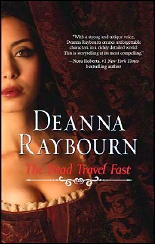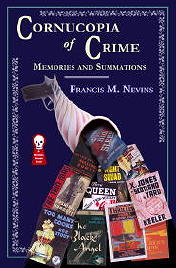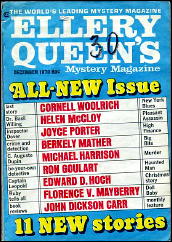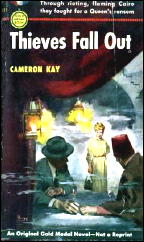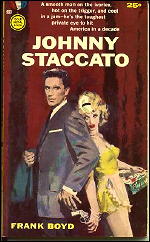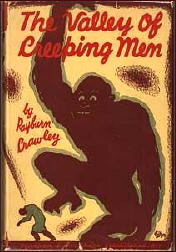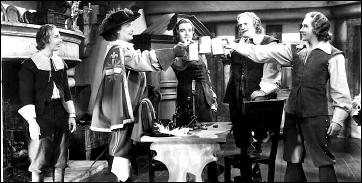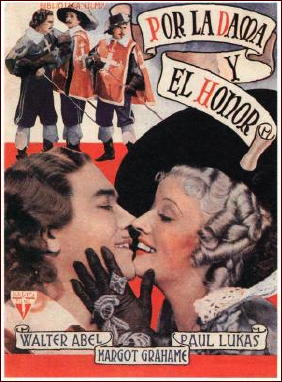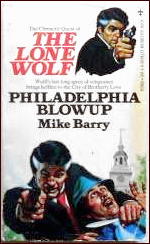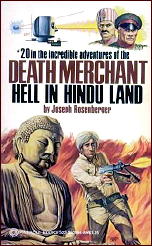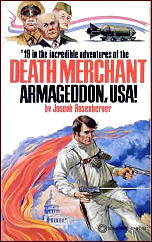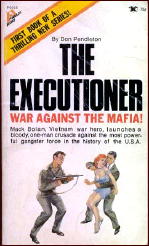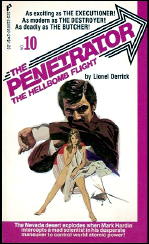This particular list of motion pictures was prompted by Walter Albert’s recent review of De Luxe Annie (1915), in which all of the heroine’s difficulties stem from being knocked unconscious early on and suffering from amnesia for the rest of the movie, or almost.
In a comment that he left soon after the review appeared, David Vineyard wondered “where would suspense fiction and movies be without it?”
“It” referring to the concept of amnesia, as practiced in the movies and crime fiction. Which of course triggered the obvious question from me to David. The rest of this post is his reply. Thanks, David!
>>>
Movies with an amnesia theme. This one could get pretty long fast, but I’ll try to restrain myself:
Street of Chance — Burgess Meredith. Based on Cornell Woolrich’s Black Curtain about a man with short term amnesia who thinks he may have committed a murder.
Female Fiends — Lex Barker. A writer and producer who wakes up with no memory and in the middle of a murderous plot; based on Q. Patrick’s Puzzle for Fiends.
Stage Fright — With Jane Wyman. Richard Todd’s character suffers partial amnesia involving the murder the police want him for.
No Man of Her Own — Barbara Stanwyck claims partial amnesia to cover lapses in her memory in pretending to be another woman; based on Woolrich’s I Married a Dead Man.
Mister Buddwing — James Garner. Based on the novel Buddwing by Even Hunter a man with amnesia stumbles from one woman in his life to the next trying to put together who he is.
36 Hours —James Garner again. German doctor Rod Taylor uses drugs to induce amnesia in order to get Garner to reveal the true site of the D-Day landings.
The Third Day — George Peppard. An obnoxious millionaire struggles to remember who is trying to kill him; based on Joseph Hayes’ novel.
Power of the Whistler — Richard Dix. An amnesiac tries to clear himself by regaining his memory.
The Manchurian Candidate — Frank Sinatra. An Army officer tries to combat drug induced memories implanted as part of a Chinese plot from Richard Condon’s novel.
Fear in the Night — Deforest Kelly. Jazz musician gets help from his cop brother-in-law Paul Kelly to recover marijuana induced memory loss and clear his name; based on Cornell Woolrich short ‘Marijuana’ and remade with Kevin McClory and Edward G. Robinson as Nightmare.
Phantom Lady — Alan Curtis man’s drink induced memory loss means his friends have to follow abstract clues from his flawed memory to save him from execution based on Cornell Woolrich novel.
Memento — Man who loses his memory every time he goes to sleep tries to solve the murder of his wife by leaving clues behind to follow each day.
Dark City — Rufus Sewell. A man with amnesia struggles to recall reality in clever noirish sf film based on a graphic novel.
The Matrix — Keanu Reeves. Man begins to see through the illusion he lives in.
Two in the Dark — Walter Abel . Female cabbie helps a man recall his memory as they race to solve a murder, remade with Tom Conway and Ann Rutherford and directed by Anthony Mann as Two O’Clock Courage.
Mirage — Gregory Peck. A city-wide blackout triggers a crisis for a businessman whose life begins to unravel when nothing he remembers is real.
Blindfolded — Rock Hudson. A psychiatrist tries to help agent suffering from trauma induced memory loss but finds himself in a spy plot.
Who? — Elliot Gould. Investigators try to understand what happened to man with robot head; based on Algis Budrys’s novel.
Random Harvest — Ronald Colman. The granddaddy of them all, based on James Hilton’s novel.
Somewhere in the Night — John Hodiak. A private eye returns from the war with memory loss.
The Long Wait — Anthony Quinn. A man returns home with memory loss; based on Mickey Spillane novel.
Singapore — Fred MacMurray. A woman loses her memory and can’t remember the man who loved her. Remade as Istanbul with Errol Flynn.
As You Desire Me — Greta Garbo. A woman with amnesia returns to husband she doesn’t remember, from the Pirandello play.
Spellbound — Gregory Peck. Am amnesiac poses as a psychiatrist but becomes the patient; based on Francis Beeding’s The House of Dr. Edwards.
The Woman With No Name — Phyllis Calvert. A woman sufferis from amnesia.
The Private Life of Sherlock Holmes — Robert Stephens. A woman claims to have lost her memory and seeks help from Sherlock Holmes.
The Seven Percent Solution — Nicol Williamson. Sigmund Freud helps Sherlock Holmes recover repressed childhood memories so he can solve a case and cure himself of cocaine addiction.
Love Letters — Joseph Cotton. GI Cotton comes to England to meet Jennifer Jones whom he corresponded with who has lost her memory and may be in danger, with a screenplay by Ayn Rand.
I Love You Again — William Powell. Con man regains his memory and tries to save his new respectable life with wife Myrna Loy from his old pals in this screwball comedy.
Crossroads — William Powell. French diplomat must regain his memory to save himself.
Where Were You When the Lights Went Out? — Doris Day tries to remember what happened the night of the blackout when she had too much to drink.
The Witches — Joan Fontaine. A woman’s loss of memory puts her in danger from a coven of witches.
Carnival of Souls — Candace Hilligloss. A woman wanders around in weird haze.
Portrait of Jennie — Jennifer Jones. A young woman doesn’t know she is a ghost.
The Mummy’s Curse — Lon Chaney Jr. Young woman doesn’t recall she is 3000 years old; basically the plot of Blood on the Mummy’s Tomb and The Awakening; based on Bram Stoker’s Jewel of the Seven Stars.
The Black Angel — Dan Duryea. A man plays detective to help a woman clear her husband with surprising results; based on the Cornell Woolrich novel.
The Haunted Strangler — Boris Karloff. In retrospect mystery writer Boris should never have opened up the twenty year old murder case …
Hangover Square — Laird Cregar. A pianist and composer doesn’t quite remember what he gets up to when the music compels him; based on Patrick Hamilton’s play.
Suddenly Last Summer — Elizabeth Taylor. A psychiatrist tries to help young woman recall traumatic event while battling her over protective mother-in-law.
Landslide — Anthony Edwards. A man suffers selective memory loss after an accident.
The Bourne Identity — Matt Damon. A spy is hunted on all sides and doesn’t recall why.
The October Man — John Mills. A man with mental problems has to clear himself of murder and prove to himself he didn’t do it. Eric Ambler wrote the screenplay.
Knock on Wood — Danny Kaye. A ventriloquist who believes is dummy is talking to him suffers memory loss and personality changes as a result of plot by his analyst to use him in spy plot.
Highly Dangerous — Margaret Lockwood. A scientist on mission for the Secret Service is tortured and afterward thinks she is a famous radio secret agent from a popular children’s show. Screenplay by Eric Ambler.
Bewitched — Phyllis Thaxter. An early variation on multiple personalities as woman committed murder in her other persona.
Three Faces of Eve — Joanne Woodward. A woman doesn’t recall what she does in alternate personalities.
Others?
